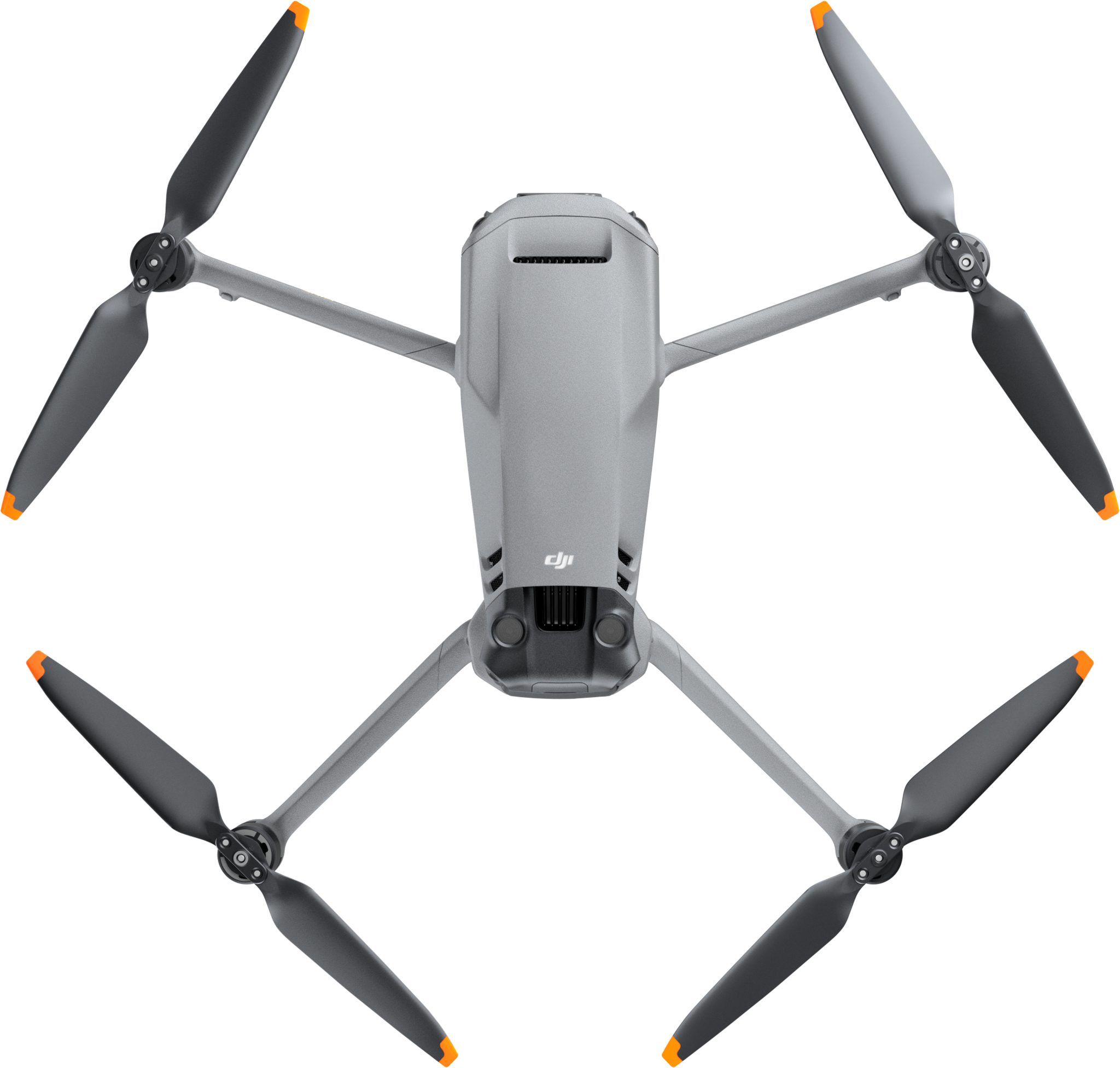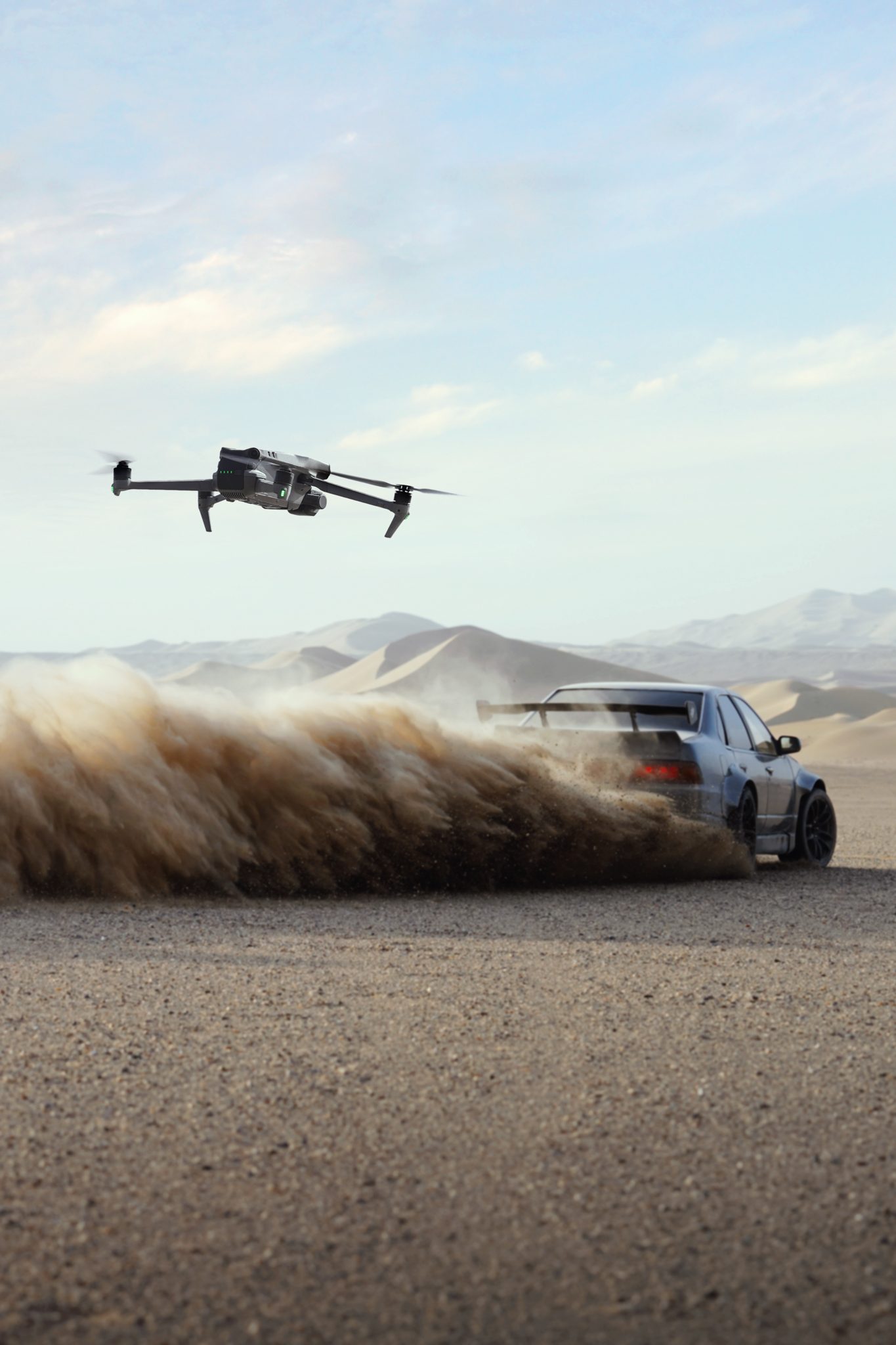Mavic 3 features upgraded sensor, dual-camera system and longer flight times
By Jim Magill
With the long-anticipated release of the Mavic 3, DJI, the global leader in civilian drone production, offers a UAV featuring an upgraded sensor, dual-camera system, omnidirectional obstacle sensing, smarter flight modes and longer flight times.

“Creating the Mavic 3 was an arduous journey for our engineers who tackled complex technical problems to serve the goal that the Mavic series has always met – build professional-quality imaging and flight technology into a compact consumer drone,” Ferdinand Wolf, creative director of DJI Europe, said in a statement.

Its upgraded hardware and software enable the drone to process 5.1K video at 50 frames per second (fps) in supple and nuanced color with heightened low-light sensitivity, and supports 4K/120fps video for higher-quality results for slow-motion footage.
DJI is also offering an enhanced Mavic 3 Cine edition, which features Apple ProRes 422 HQ encoding for richer video processing, with an internal 1TB solid-state drive (SSD) onboard for high-speed data storage.
“Mavic 3 enables users to effortlessly make epic shots without compromising on small size, stunning performance, pervasive flight safety and dazzling image quality,” Wolf said.
Superior image quality
With its new dual-camera Hasselblad system, the Mavic 3 sets new standards for aerial photography and videography for consumers and professionals.
DJI Mavic 3’s customized L2D-20c aerial camera embeds a professional-grade 4/3 CMOS sensor with a 24mm prime lens in a sleek and compact form. The camera is capable of shooting 20MP still images in 12-bit RAW format and videos in 5.1K at 50fps and 4K at 120fps.This higher video definition creates smoother footage and greater possibilities for cropping and editing, while allowing for the production of slow-motion video at 120fps.
Weighing just 12.5 grams, the 24mm equivalent autofocus prime lens has an 84° field of view (FOV) to capture more details with sharper clarity. Mavic 3’s second camera features a 162mm telephoto lens with 28x hybrid zoom, a combination of digital and optical zoom and aperture of f/4.4 that can freely bring distant objects visually closer. The new Vision Detection Auto Focus technology for quick focusing allows the Hasselblad camera to work with multiple vision sensors on board to capture distance data to optimize focusing speed.
The Mavic 3 delivers a deeply accurate color palette straight out of its camera thanks to the unique Hasselblad Natural Colour Solution (HNCS), first introduced to DJI cameras with Mavic 2 Pro. The drone records aerial videos at high resolutions and frame rates and captures up to 1 billion colors thanks to the 10-bit D-Log color profile.
Enhanced flight safety
Mavic 3’s enhanced flight safety features include improved obstacle-sensing and navigation systems. APAS 5.0 combines inputs from six fish-eye vision sensors and two wide-angle sensors, which seamlessly and continuously sense obstacles in all directions and plan safe flight routes to avoid them, even in complicated environments.
In addition, if the subject moves too fast and temporarily goes out of frame, the visual sensors on the aircraft will continue to track and frame the subject intelligently and pick it back up when it reappears.
The drone comes with a powerful positioning algorithm that improves hovering precision with signals from GPS, GLONASS, and BeiDou satellites. This enables Mavic 3 to lock onto multiple satellite signals faster than ever. The increased positioning precision makes Mavic 3 more stable when shooting long exposures and time lapses.
In addition, the drone’s integrated AirSense system warns drone pilots of nearby airplanes and helicopters that are transmitting ADS-B signals, so they can quickly fly to a safer location.
Extended battery life and improved aerodynamics
DJI also has streamlined the shape of Mavic 3’s arms, body and gimbal to be more aerodynamic than those on previous drone models. Wind -tunnel testing shows that Mavic 3 produces 35% less drag than previous generations of Mavic, allowing for faster top speeds.
Other new features
Mavic 3 updates and improves upon the Return to Home (RTH) system offered on other DJI products by allowing the aircraft to automatically determine the shortest, safest and most energy-efficient route to land back at its home point. At the same time, the drone measures the wind speed of its current environment and calculates the power required for returning home based on the wind speed and the return path in real-time.
The drone also features DJI O3+, an upgraded transmission system that delivers stable, smooth and clear video transmission even under challenging conditions, such as flying a drone in an environment with strong signal interference. With a maximum control range of 15 kilometers, O3+ enables Mavic 3 to fly further and transmits signals with higher stability and less video lag than on previous models.
Mavic 3 is the first DJI drone to offer a high frame-rate transmission with a 1080p/60fps live feed. This means the camera view is displayed at a resolution close to what the camera actually records. O3+ also makes Mavic 3 more responsive to the pilot’s control.
The drone also offers a new array of intelligent operation modes for creating and editing compelling photos and videos by controlling the flight path and camera movements automatically. These features include MasterShots, Panorama mode, and QuickTransfer.
MasterShots allows users to create high-quality videos within minutes, which can be directly shared with their friends. Panorama Mode allows the drone to directly stitch and process pictures, without using the DJI Fly app or any post-production. QuickTransfer lets users store and process materials on their mobile devices without linking with the remote controller.
Mavic 3 can now transmit data from the drone to a mobile device more quickly through the Wi-Fi 6 protocol.
Read more about previous Mavic models, DJI’s partnership with Hasselblad, and DJI’s map of lives saved with drone technology.
Miriam McNabb is the Editor-in-Chief of DRONELIFE and CEO of JobForDrones, a professional drone services marketplace, and a fascinated observer of the emerging drone industry and the regulatory environment for drones. Miriam has penned over 3,000 articles focused on the commercial drone space and is an international speaker and recognized figure in the industry. Miriam has a degree from the University of Chicago and over 20 years of experience in high tech sales and marketing for new technologies.
For drone industry consulting or writing, Email Miriam.
TWITTER:@spaldingbarker
Subscribe to DroneLife here.